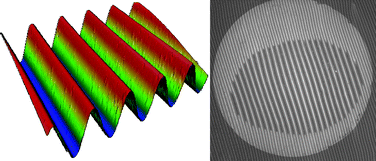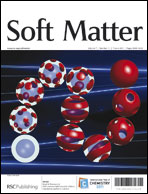Mechanics of wrinkled surface adhesion†
Abstract
Surface buckling instabilities, particularly wrinkles, are spontaneously occurring surface patterns that can cover large areas and have the potential to modify the adhesion of surfaces in a systematic manner; however, the impact of these wrinkled features is not understood quantitatively. We utilize a novel fabrication process to form aligned wrinkles from polystyrene and polydimethylsiloxane and quantify their adhesion using contact adhesion tests. Wrinkle amplitudes range from 0.3 μm to 11.4 μm and wavelengths range from 6.2 μm to 74.0 μm, and these two parameters are tuned independently. The maximum separation force of a flat cylindrical probe from a wrinkled surface depends nonlinearly on the wrinkle geometry, as described by both amplitude and wavelength. Additionally, results are presented for a set of adhesion experiments conducted on single, macroscopic cylinders using small circular flat probes to mimic the contact of individual wrinkles. A simple scaling is presented that incorporates geometric parameters, testing geometry and materials properties to predict the separation force. This relationship is shown to be in good agreement with the experimental data.


 Please wait while we load your content...
Please wait while we load your content...